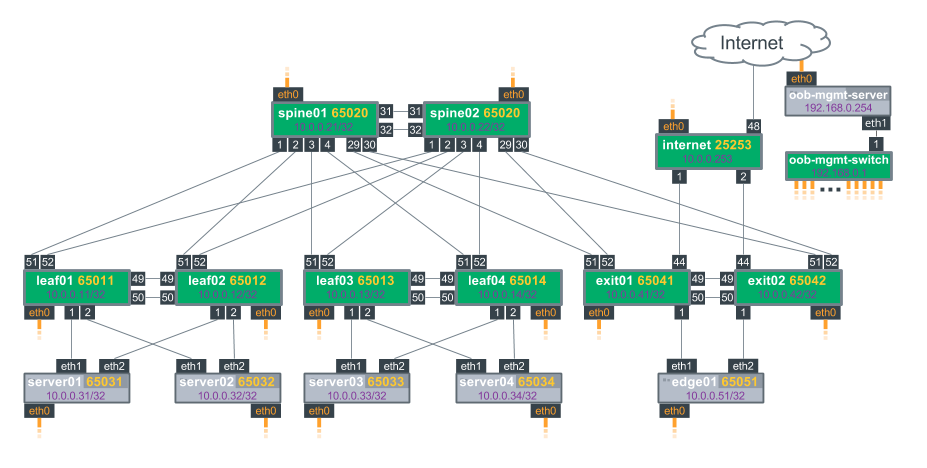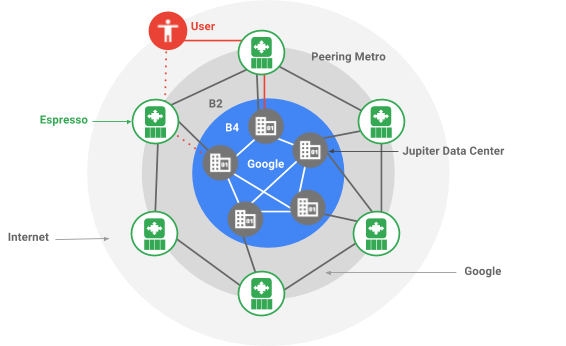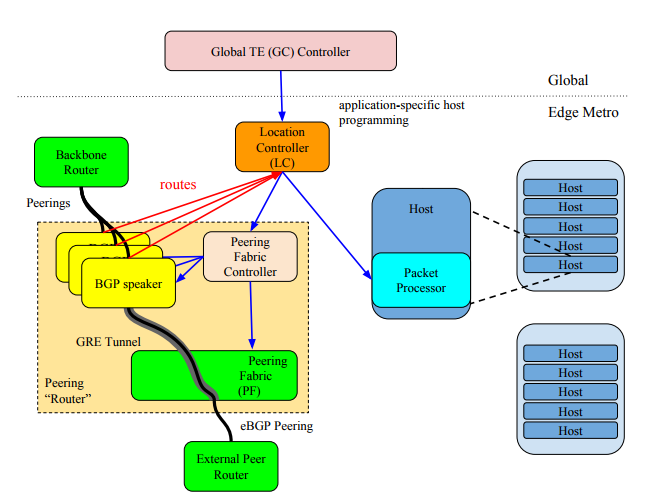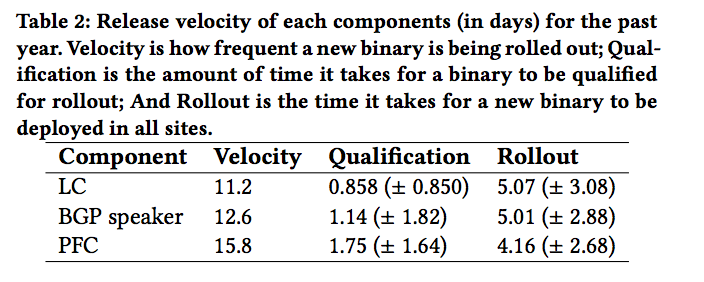Now, P4 is gaining momentum due to engagement of big players such as Google and AT&T. P4 has potential to cause a significant change in the industry and deliver on the SDN value-proposition. I’d like to discuss that.
In summary, P4 aims to provide 3 main goals:
- Reconfigurability
- Protocol independence
- Target independence
OpenFlow had its shortcomings: somehow diversity of implementation strategies evolved into incompatibility. P4 target independence proposes to solve this issue using a compiler to translate P4 code into switch code taking into account its capabilities.

In order to understand how disruptive this is, let’s look at the current state of affairs: commodity silicon vendors such as Broadcom and Mellanox already have an API to control their switches, the existence of that API itself already disrupted the industry enabling Cumulus, SnapRoute and even Arista. Now would you prefer that your silicon vendors established a common interface, or would you rather rewrite software everytime you want to test a new switch Vendor? The answer is obvious: the first option benefits users and new vendors, the second benefits established vendors. New industry players or the adventurous operators could write software on top of P4 and achieve multi-vendor integration at the cost of writing compilers for each vendor they use.
So, that’s the big pay-off opportunity, enabling competition, thus innovation. The challenge here is to provide vendors the incentives to write the P4 compiler.
New industry players or the adventurous operators on the other side, could be able to write software on top of P4 and achieve multi-vendor integration at the cost of writing compilers for each vendor they use. That can be game-changing, the big questions are “How eager are developers to write P4 software?”, “how much does it cost to hire somebody to do it?”, additionally, “Who will write Cisco/Broadcom specific p4 compiler code?”
There are endless opportunities: in a parallel universe, AT&T forces Cisco to enable a P4 compiler to their devices, Cisco writes a bad compiler, claims it’s bad technology and sells you ACI instead. In a different universe, Barefoot writes a Broadcom compiler ensuring it works, but then it “wastes” some resources promoting a competitor. A little bit more realistically, SnapRoute or Cumulus could write a P4 compiler to Broadcom Tomahawk, and thus would be able to enable their software in a plethora of existing devices. Even more realistically, Barefoot writes their own compiler to Tofino and keeps selling P4 to a limited niche market.
Now, if Barefoot takes on the responsibility to write a P4 compiler for Broadcom and Mellanox that would be translated into huge value to NOS vendors and Operators; since they would be able to seamlessly switch vendors. It would marginally increase adoption of Tofino, so the question remains, who would pay for this?
Now how much does it cost to adopt P4?
Before I answer this question I’m going to callback to a point previously when I wrote about network disaggregation. I ended it asking: “Does OpenFlow effectively lock you in?”. Now the same question may apply to P4.
The question is misleading by itself. I’ve heard vendors saying “OpenFlow locks you in, you might as well just buy our SDN”. There’s just so much wrong with this. OpenFlow isn’t perfect, but it does allow you to adopt software processes to deliver features much faster than your vendor will.
Any choice is a potential barrier and locks you in a little bit, but what everybody refers to when talking about lock-in is hardware lock-in. When you buy a generic x86 computer you are free to install Ubuntu, Debian, Windows or whatever you’d like, when you buy a PlayStation, you can’t just install Xbox on it, that’s vendor lock-in, the costs of doing that are prohibitive, you would be better off just buying another appliance.
You could at barely no cost try an OpenFlow Lab or Field trial on Broadcom-based network devices and fallback to Cumulus if it doesn’t fulfill your needs. Unsurprisingly, The vendors will claim lab trials aren’t needed because of their product quality, but the experience will tell there will always be a missing feature.
Now P4, from the adventurous perspective, P4 is great, you just have to write more software to get it done. For everybody else it has a significant cost: you have to hire premium developers or Barefoot itself to do it. That cost won’t be insignificant when using Broadcom + Big Switch might already give you the tools to improve your current process.
OpenFlow vs P4
OpenFlow is going to be 10 years old next year, a significant amount of resources has been put into testing it. It has been (properly) commercially supported by Big Switch for 3+ years if I’m not mistaken. I’d say with certainty that you could get an OpenFlow solution production-ready in a year. Realistically, could you get P4 ready to be deployed in production in a year?
Misconceptions:
- Will P4 replace OpenFlow? Maybe. P4 offers a different value proposition. OpenFlow agents may be written on top of P4. Great P4 implementations may force OF into being obsolete.
- Will P4 replace Broadcom SDK? Same answer, P4 may write a much better API on top of theirs.
- Will P4 replace OpenNSL? Why not?
- Will P4 replace NetFlow/Sflow? No. Sflow is a protocol to export data from the switches, it does not say (much) on how you should implement it in the dataplane.
- Will P4 replace Riverbed? No way.
- Will P4 replace OpenConfig? Nope, they are actually quite complementary.
Thanks for reading the long post. I welcome any thoughts or questions.











